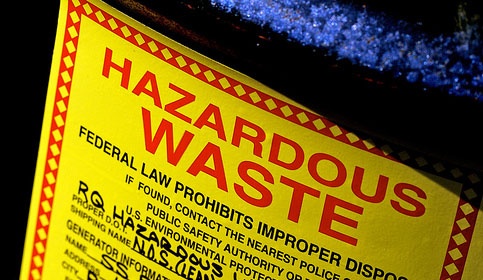To improve the efficiency of RCRA Corrective Action, in 2014, EPA Regions 3 and 7 began a pilot to implement RCRA Corrective Action using Lean process analysis with the goal of clarifying goals and expectations early in the process. The Lean process is a collection of principles and methods that focus on the systematic identification and elimination of non-value-added activity involved in producing a product or delivering a service to customers. Within the RCRA Corrective Action program, the Lean process was used to remove various redundant steps and frontload goals and expectations through a corrective action framework (CAF), resulting in significant time savings.
Read MoreAudit, Compliance and Risk Blog
Tags: Environmental risks, Environmental, EHS, EPA, Hazcom, RCRA
The Equal Employment Opportunity Commission (EEOC) administers and enforces most national anti-discrimination laws. As part of these responsibilities, EEOC issues formal regulations, and a host of less formal guidance documents – some directed to employers, some to employees, and/or some to the agency’s own personnel. In August 2016, EEOC reissued EEOC Enforcement Guidance on Retaliation and Related Issues (“the Guidance”), describing its approach to situations where employees claim they’ve suffered retaliation for asserting rights against discrimination under the laws EEOC administers, or even just for questioning workplace rules and situations.
Read MoreTags: Employer Best Practices, Employee Rights, EEOC, directors, directors & officers
The U.S. Environmental Protection Agency (EPA) regulates hazardous wastes under the Resource Conservation and Recovery Act (RCRA). These regulations include a detailed national system governing hazardous waste shipments from generators to offsite management facilities. In October 2012, RCRA was amended by the Hazardous Waste Electronic Manifest Establishment Act, authorizing EPA to implement a national electronic manifest system. In 2014, EPA adopted regulations to govern the new electronic system (I blogged about the rules here), but deferred compliance provisions (including specific electronic formats) while the agency continues to work on its data collection and management system.
Read MoreTags: Environmental, EPA, Hazcom, RCRA
U.S. and China Renew Climate Change Vows to Jumpstart Paris Agreement
Posted by Jon Elliott on Tue, Sep 27, 2016
In recent years, the United States and China have found a rare basis for cooperation in their joint efforts to accelerate international efforts to manage and reduce climate change. The first significant step in this cooperation was the two countries’ bilateral agreement in November 2014 to manage greenhouse gas (GHG) emissions within their boundaries (I blogged about it here). At the time, the two countries offered their commitments as a way to reinforce international climate change negotiations underway to replace the expiring Kyoto Protocol to the United Nations Framework Convention on Climate Change. In December 2015, those negotiations produced the Paris Agreement, which established global mechanisms for countries to declare self-enforcing national GHG management commitments (I blogged about the Paris Agreement here).
Read MoreTags: EPA, Greenhouse Gas, ghg, climate change
New Rules For Labor Law Compliance By Federal Contractors
Posted by Jon Elliott on Thu, Sep 22, 2016
In July 2014, President Obama issued Executive Order (EO) Number 13673, establishing a series of reporting and procedural requirements for federal contractors, inducing them to provide “Fair Pay and Safe Workplaces” to their employees. Some requirements are specific in the EO, while others were left for clarification by revisions to the Federal Acquisition Regulation (FAR), for contracts subject to these requirements. (I blogged about the EO here). None became effective in 2014, but instead they have awaited the FAR revisions. The revised FAR has been issued effective October 25, 2016, for appropriate contracts issued by the Department of Defense (DoD), General Services Administration (GSA) and National Aeronautics and Space Administration (NASA). The new requirements will be phased in, covering contracts and subcontracts for goods and services greater than $50 million immediately, and those greater than $500,000 effective April 25, 2017.
Read MoreTags: Employer Best Practices, OSHA, Employee Rights, EEOC, directors & officers
White House Guidance for Agency Consideration of Climate Change in Environmental Reviews
Posted by Jon Elliott on Tue, Sep 20, 2016
On August 2, the White House’s Council on Environmental Quality (CEQ) issued guidance to assist federal agencies in their consideration of the effects of greenhouse gas (GHG) emissions and climate change when evaluating proposed federal actions. I refer to this documents as “the Guidance” below.
Read MoreTags: Environmental risks, Environmental, EPA, Greenhouse Gas, ghg, climate change, CAA, CEQA
New Rules Tighten Greenhouse Gas Emission Standards for Heavy Duty Vehicles
Posted by Jon Elliott on Thu, Sep 15, 2016
The Clean Air Act (CAA) includes extensive regulatory requirements on “mobile sources,” which cover efficiency and emissions standards for a broad range of vehicles with internal combustion engines (automobiles, buses, aircraft), “nonroad engines and vehicles” (including lawnmowers, bulldozers and marine vessels), as well as motor fuel standards intended to promote cleaner burning fuels. The U.S. Environmental Protection Agency (EPA) uses CAA authority to set emission limits from engines, for CAA-regulated air pollutants, including carbon dioxide (CO2) regulated for its greenhouse gas (GHG) aspects.
Read MoreTags: California Legislation, Environmental risks, Environmental, EPA, Greenhouse Gas, ghg, climate change, CAA, Transportation
Extending the Montreal Protocol to Address Climate Change
Posted by Jon Elliott on Tue, Sep 13, 2016
The Montreal Protocol on Substances that Deplete the Ozone Layer provides the international framework for protecting the earth’s stratospheric ozone layer, by identifying and minimizing emissions of ozone depleting substances (ODSs). The original Montreal Protocol was initialed in September 1987 (I summarized it here). It is widely considered an effective example of international cooperation (I blogged about the healing of the “ozone hole” here), in contrast with ongoing struggles to reach binding international agreements to address climate change. In fact, during 2016 efforts are underway to build on the Montreal Protocol’s strengths by amending it to address additional chemicals that may harm ozone and contribute to climate change.
Read MoreTags: EHS, EPA, Greenhouse Gas, ghg, climate change
EPA Takes Another Step Towards Regulating GHG Emissions From Aircraft
Posted by Jon Elliott on Tue, Sep 06, 2016
On July 25, the Environmental Protection Agency (EPA) issued a formal finding under the Clean Air Act (CAA), that greenhouse gas (GHG) emissions from aircraft “endanger public health or welfare.” This aircraft-specific finding builds on EPA’s 2009 finding that GHGs endanger public health, covering the same six GHGs: carbon dioxide (CO2), methane, nitrous oxide, hydrofluorocarbons, perfluorocarbons, and sulfur hexafluoride. EPA calculates that aircraft produce 12 percent of all U.S. transportation GHG emissions and more than 3 percent of total U.S. GHG emissions, and that U.S. aircraft GHG emissions represent 29 percent of all global aircraft GHG emissions and 0.5 percent of total global GHG emissions.
Read MoreTags: Environmental risks, Environmental, EPA, Greenhouse Gas, ghg
EPA Establishes Formaldehyde Limits For Composite Wood Products
Posted by Jon Elliott on Tue, Aug 30, 2016
EPA has just issued final rules to limit exposure to formaldehyde emissions from plywood and other laminated and composite wood products. The Formaldehyde Emission Standards for Composite Wood Products Act of 2010 (“the Act”, which is codified as Title VI of the Toxic Substances Control Act (“TSCA”)) required EPA to develop these rules. The Act responded to evidence of dangerous emissions from substandard construction products, publicized particularly by health hazards in temporary trailers provided by the Federal Emergency Management Agency (FEMA) to victims of Hurricane Katrina and other natural disasters. The Act established standards based on California rules, and directed EPA to issue nationwide rules by January 1, 2013 to enforce these standards. EPA missed its deadline, but has just announced rules that will become effective after publication in the Federal Register (probably in August 2016).
Read MoreTags: Health & Safety, Environmental risks, Environmental, EHS, EPA, Hazcom










